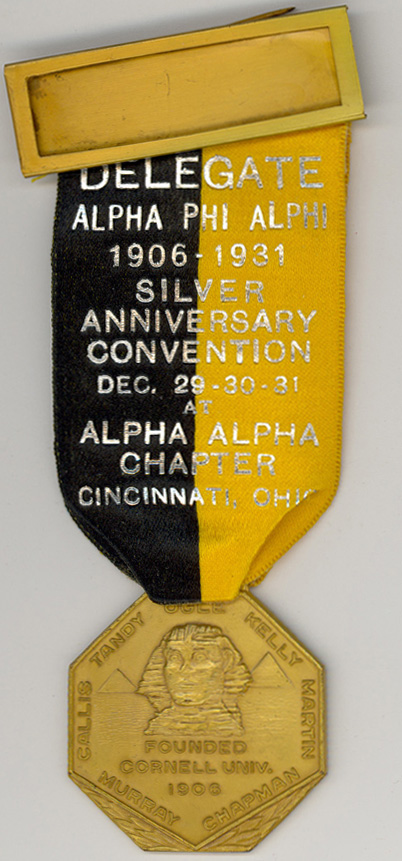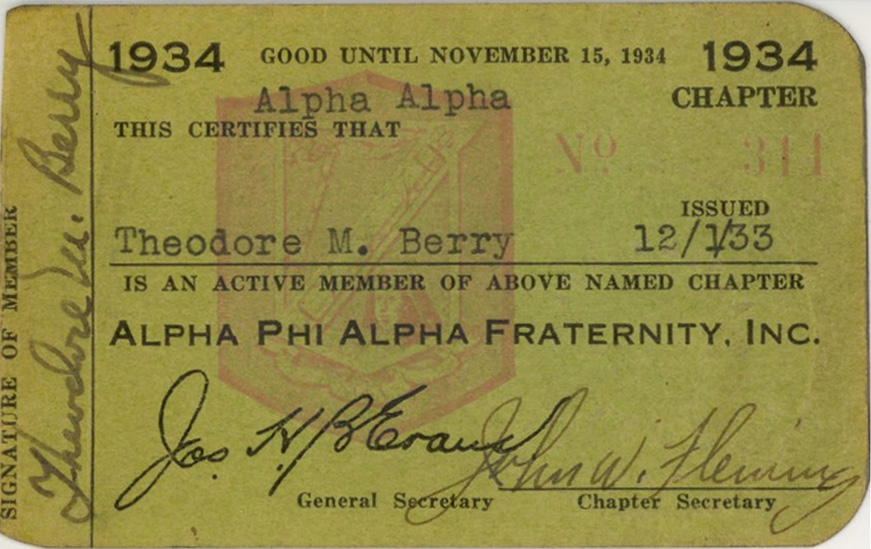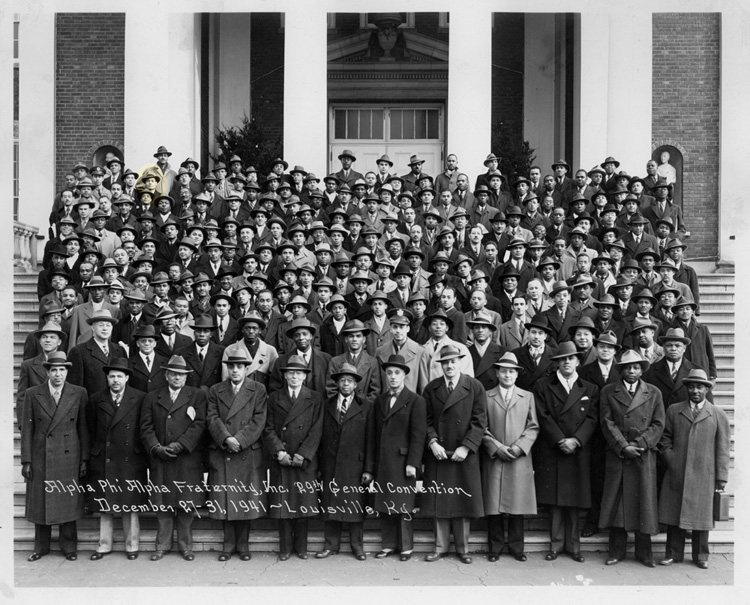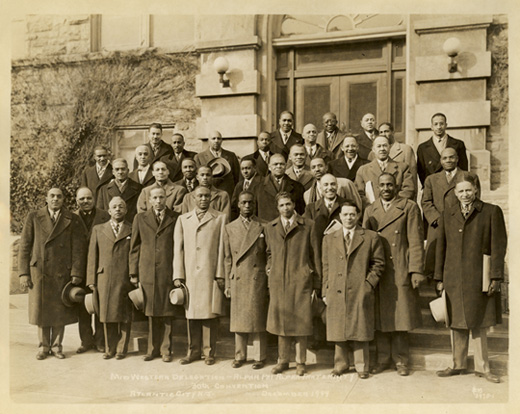By: Laura Laugle
 It (finally!) stopped raining long enough for me to transport some photos from here in the Blegen Library across campus to the Langsam Library to Preservation Services. My favorite among the photos needing repair work are some wonderful panoramic photos from the 1930s of both the Cincinnati chapter and annual conventions of Alpha Phi Alpha, the nation’s first intercollegiate fraternity for African American men. These photos are quite large, around 30-46 inches long and are beautifully done group shots of the members in their spiffiest attire. While those materials are currently undergoing restoration, I would still like to share with you a number of other items I’ve found relating to AΦA.
It (finally!) stopped raining long enough for me to transport some photos from here in the Blegen Library across campus to the Langsam Library to Preservation Services. My favorite among the photos needing repair work are some wonderful panoramic photos from the 1930s of both the Cincinnati chapter and annual conventions of Alpha Phi Alpha, the nation’s first intercollegiate fraternity for African American men. These photos are quite large, around 30-46 inches long and are beautifully done group shots of the members in their spiffiest attire. While those materials are currently undergoing restoration, I would still like to share with you a number of other items I’ve found relating to AΦA.
Berry became a member of the organization after graduating from Woodward High School and becoming that school’s first African American valedictorian in 1924. In 1928, the final year of his Arts and Sciences program, Berry became the chapter’s first undergraduate Vice President and helped found a Columbus chapter of the organization, Alpha Rho Lambda, in December of 1929. Berry continued to be active in the organization even after graduating with his law degree in 1932 and became the organization’s general legal counsel in 1934, a position which he held until 1939 when he became Hamilton County’s first African American Assistant Prosecuting Attorney. Today, the Cincinnati chapter holds an annual Theodore M. Berry Beautillion and Scholarship Gala to recognize the achievements of African-American male high school students.
Berry is highlighted in sepia in the above photo. Click on the photo to see a larger version of the original.
In 2010, the University of Cincinnati Libraries received a $61,287 grant from the National Historical Publications and Records Commission of the Archives and Records Administration to fully process the Theodore M. Berry Collection in the Archives & Rare Books Library. All information and opinions published on the Berry project website and in the blog entries are those of the individuals involved in the grant project and do not reflect those of the National Archives and Records Administration. We gratefully acknowledge the support of NARA.




